#Cornish traditional year
Explore tagged Tumblr posts
Text
A friend just sent me a tiktok list of favourite baby names for girls and my name is number one oh it is so joever
#my mum in 2002: I will give my daughter a traditional Cornish baby name that is so uncommon in the uk#it’s not even a measured datapoint get. what could possibly go wrong#21 years later:#I’m sorry if you’re not Cornish giving your kids Cornish names I will punch you#other than the super mainstream ones like Trystan or Jennifer ofc
3 notes
·
View notes
Text
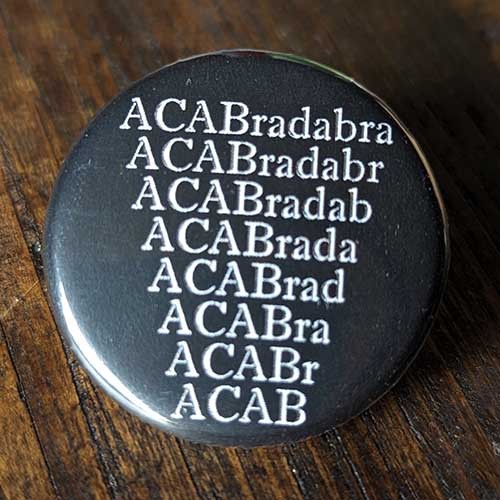
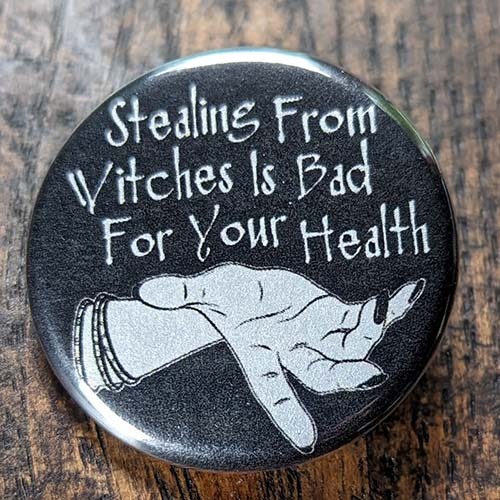

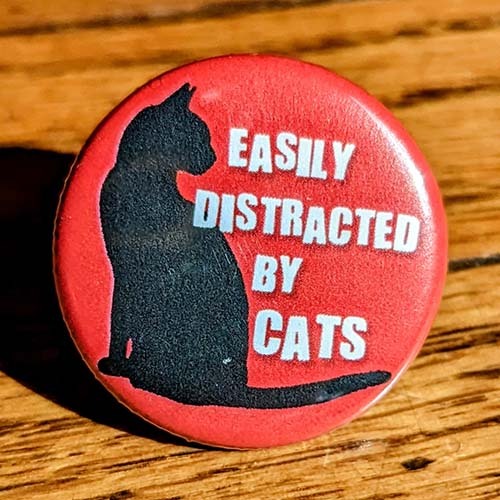
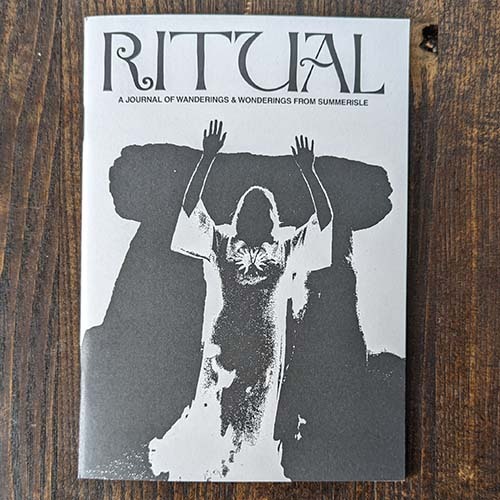
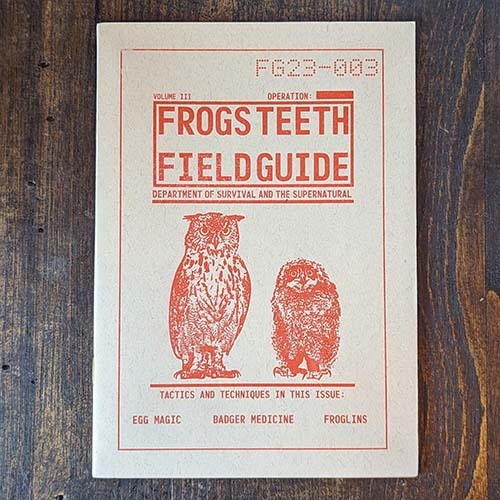
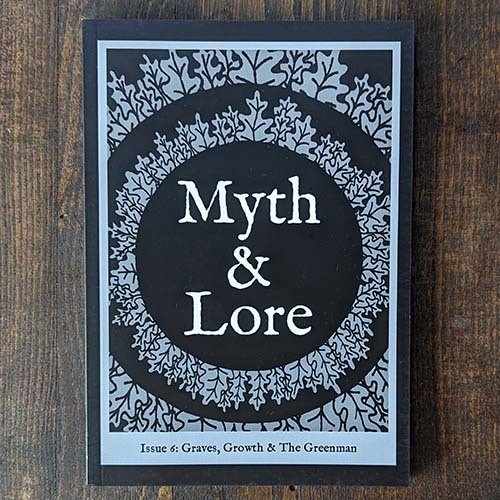

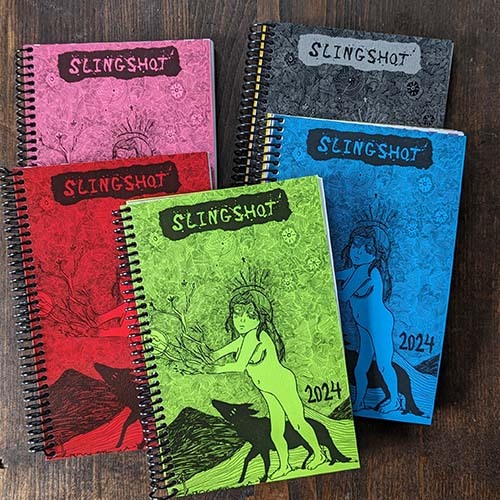
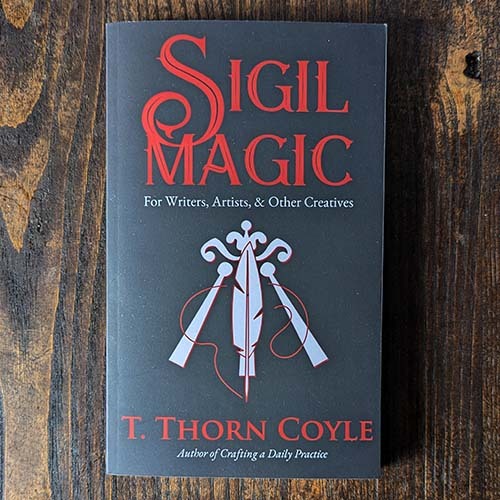

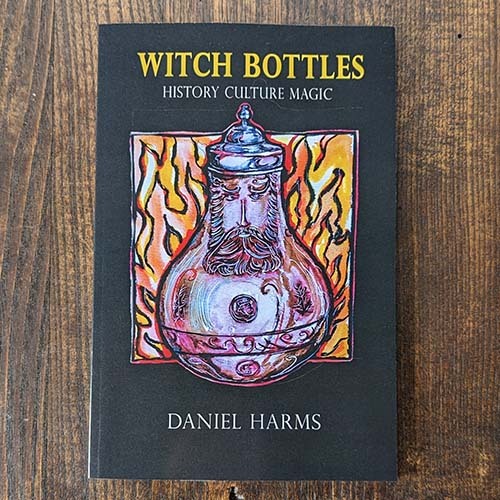
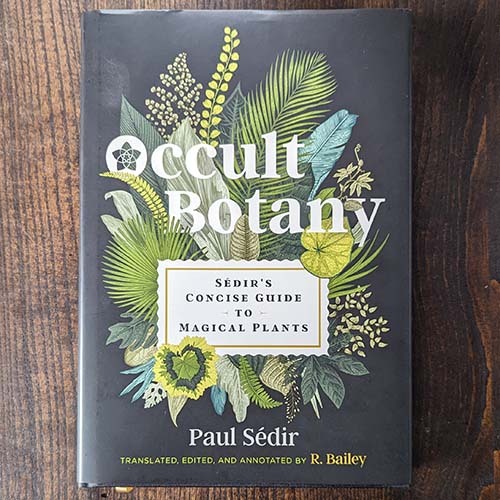
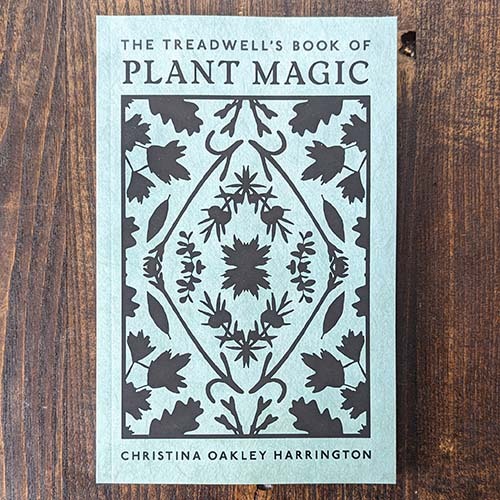
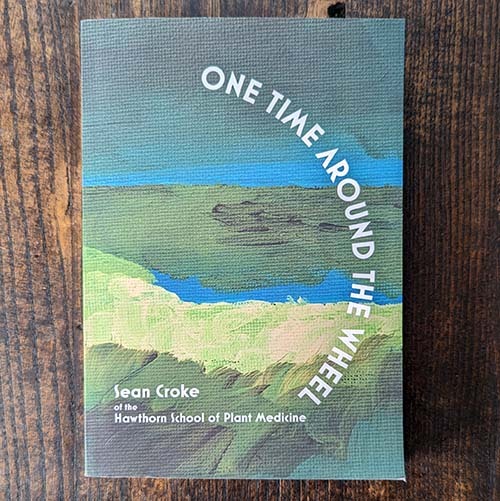
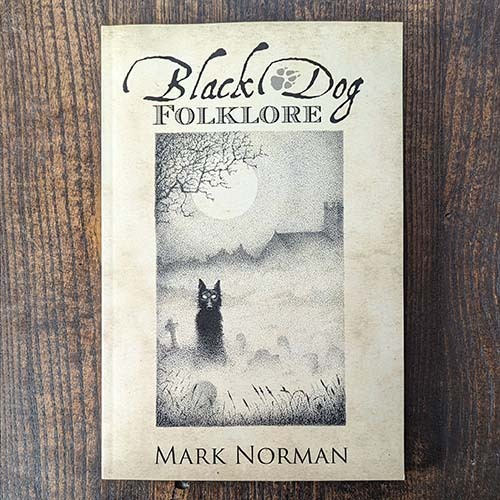
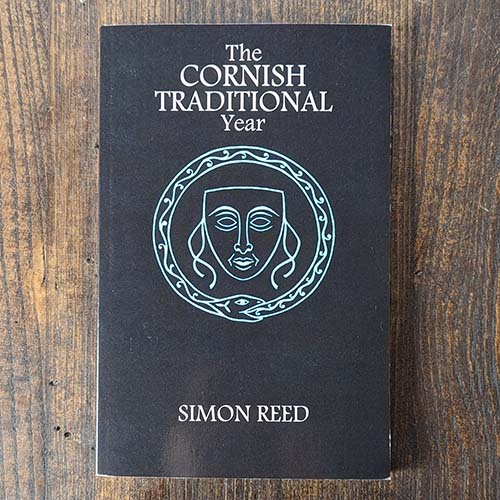
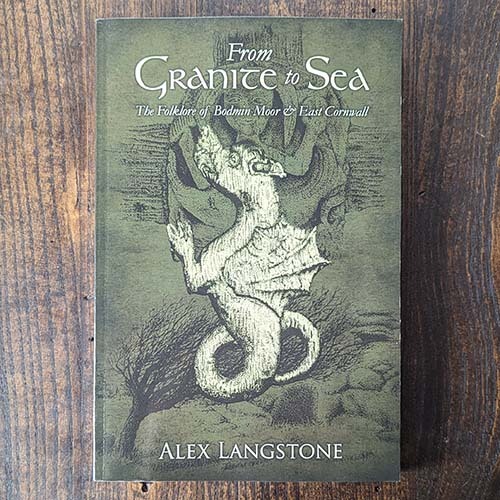
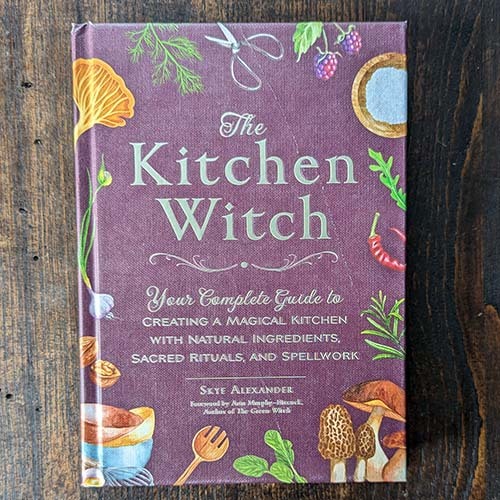

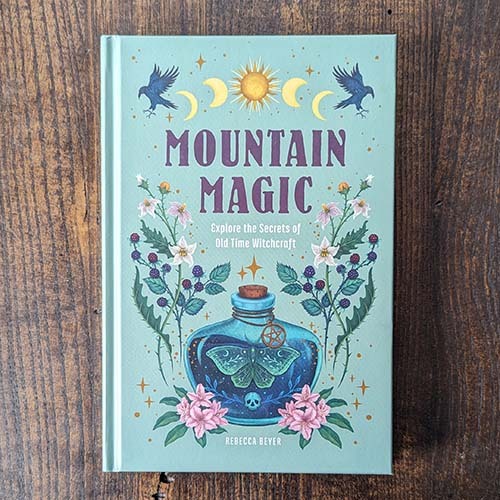
It's been a busy vending season! I finally got a chance to update the website with these new buttons, zines, books, and organizers!
Portland Button Works & Spiral House Shop September 22, 2023! - New in Stock for Autumn!
BUTTONS
ACABradabra
Stealing From Witches Is Bad For Your Health
Easily Distracted by Plants
Easily Distracted by Cats
ZINES
Ritual (from the folks at Weird Walk comes a fanzine about The Wicker Man)
Frogs Teeth Field Guide Issues 1, 2, 3
Myth & Lore Issues 1, 2, 3, 4, 5, & 6
SLINGSHOT ORGANIZERS
Small pocket sized
Small spiral bound
Large spiral bound
BOOKS
Sigil Magic: For Writers and Other Creatives by T. Throrn Coyle
Magical House Protection : The Archeology of Counter-Witchcraft by Brian Hoggard
Witch Bottles: History, Culture. Magic by Daniel Harms
Occult Botany: Sédir's Concise Guide to Magical Plants by Paul Sédir
The Treadwell's Book of Plant Magic by Christina Oakley Harrington
One Time Around The Wheel by Same Croke
Black Dog Folklore by Mark Normal
The Cornish Traditional Year by Simon Reed
From Granite to Sea: The Folklore of Bodmin Moor and East Cornwall by Alex Langstone
The Kitchen Witch: Your Complete Guide to Creating a Magical Kitchen with Natural Ingredients, Sacred Rituals, and Spellwork
In the Shadows of 13 Moons: Magical Empowerment through the Dar Lunar Mysteries by Kimberly Sherman-Cook
Mountain Magic: Explore the Secrets of Old Time Witchcraft by Rebecca Beyer
#ACAB#witch shop#witch store#witchblr#witchcraft*#witch books#magic books#green witchcraft#pagan#slingshot organizers#traditional witchcraft#folk magic#treadwells#plant magic#sigils#sigil magic#witch bottles#magical protection#black dogs#shadow work#conish magic#cornish witchcraft#kitchen witch#gemma gary#troy books#wickerman#wicker man#myth & lore#myth and lore#witchy zines
441 notes
·
View notes
Text
BREAKING NEWS -
THE PRINCE OF WALES'S SOCIAL HOUSING PROJECT!
The Prince of Wales will build a £3m social housing development on his own land to tackle homelessness, delivering on his pledge in my interview with him last year that he would "absolutely" put social housing on the Duchy of Cornwall estate.
The development in Nansledan, a suburb of Newquay, the Cornish seaside town famous for its surfing, will include a mix of four-bedroom houses and one-bedroom flats.
The duchy, will supply the land for the project free of charge and cover all construction costs. It will also invest in local infrastructure, including a bus link and connections to electricity, water and superfast broadband.
The new low-carbon homes will feature slate roofs, granite lintels, solar panels, heat pumps and colourful timber windows. It will be built in a “traditional Cornish seaside” style, designed by Adam Architecture and local firm ALA Architects.
Prince William, who launched Homewards UK last year, is looking at more projects on his land. He wants other landowners to follow suit and build more social housing. William is also working with St Petrocs to offer residents “wraparound” support services in addition to housing.
Kensington Palace said: “The prince is delighted that the duchy is using the Homewards approach as inspiration for building this innovative housing project, partnering with St Petrocs to find ways of ultimately getting people into permanent housing.
“It is exactly what he wants to do and for him it’s another example that if we can show people here and in other countries what is possible, maybe others will follow our lead. The prince hopes that every town and city in the country will take inspiration from this project.”
https://archive.ph/2024.02.17-182818/https://www.thetimes.co.uk/article/prince-william-land-social-homes-project-royal-family-vtv7x6vjc
#british royal family#british royals#royalty#royals#brf#royal#british royalty#prince william#the prince of wales#prince of wales#william prince of wales#news
121 notes
·
View notes
Text
15 fics with Harry pursuing unusual careers
I love the adrenaline and potential angst within the Auror partners trope as much as the next guy, but we can all agree that our mental health improves 10 times when we see Harry leaving the Ministry, embracing other possibilities and making his own destiny. This rec list hopes to celebrate those creative, disruptive, feel-good fics that are not afraid to come up with the most absurd positions and original job titles. They can be fun, smutty, depressing, hopeful or cathartic; there’s a little bit of everything in here and I’m hoping to bring some hidden gems into everyone’s radar, too. Happy readings!
Twisted Wizards by Enchanted_Jae (T, 3k)
Draco is just putting his life back together when Potter comes along and mucks it all up again. Job: storm chaser
The R. Correspondence by noeon (T, 7.5k)
While working on the Bagshot papers, Draco makes an important discovery for British Wizarding History. Now if only Harry can keep him alive long enough to enjoy it. Job: private security consultant
Per my last letter (I hope you choke on it) by @fluxweeed and @lastontheboat (T, 10k)
Or: the one where Harry has writer’s block and Malfoy isn’t helping. Job: writer
Home County, orphaned (G, 10k)
Harry is an architect and the reluctant part-owner of his own firm. Malfoy works at The Ministry but doesn’t actually have a proper job title even though what he does sounds as though it’s pretty important. Job: architect
A Working Title by mindabbles (E, 12k)
Another in the long line of absurd biographies finally drives Harry to a desperate act. How desperate he doesn't know until his ghost writer shows up at his door. Job: Daily Prophet columnist
An Improbable Bout of Summer Madness by acari (E, 16k)
Draco had planned a quiet, peaceful summer holiday with his son. The last thing he expected was to find Potter here, in Draco's little Cornish retreat. Making fudge in a shop? The idea was too ludicrous for words. Job: fudge shop owner
The Strongest Affinity by @eidheann (T, 17k)
Trouble finding a wand for Scorpius leads Harry and Draco to something they never imagined. Job: wandmaker
Phoenix Repair Services by carpemermaid (E, 20k)
Draco hires a suspiciously private wizarding handyman to fix his kitchen when he returns home to find it destroyed. He expects a middle-aged wizard with greying hair and a pudgy gut to show up. Instead, he gets Harry Potter—with a utility belt and a charming smile—who is more attractive than he has any right to be. Job: Handyman
The Snitch-Maker by Omi_Ohmy (T, 21k)
Draco is content with his Snitches, with the tap tap tap of his hammer, and the tiny gears and sharp scent of metal in his workshop - until one day Harry Potter appears, asking for help to solve a rash of Snitch-tampering in the Quidditch world. Job: QUABBLE official (Quidditch representative)
Silhouettes in Sunsets by Pie (T, 22k)
Draco Malfoy was a Gringotts accountant by day and a luthier by night, making musical instruments that sang the language of the player’s heart, language audible only to the ears of his soul mate. Harry Potter was a struggling quill pal to the children of war and the owner of Hedwig’s Owl Emporium on Diagon—haven for future pets, owls retired from services and orphaned chicks. Job: Owl Emporium owner
Better To Burn Than To Fade Away by Ren (E, 23k)
Harry Potter is a legend in the world of broomstick racing. He's won almost every cup, trophy, and bowl – except for the historical London-Nome which has been on hiatus for the past several years. Now the London-Nome is starting again, and Harry will do anything to pull off one last big win. Job: broomstick racer
Doing the Lambeth Walk by @blamebrampton (T, 26k)
There are only three traditional choices for the cashed-up hero after victory. Harry Potter is too young to settle down and provide the wizarding world with a happy ending, and has too acute a sense of humour to spiral downwards into a spectacular flame-out. That leaves a life of good works. Job: Owner of a Social Housing and Care Centre
All Roads by @korlaena (M, 36k)
Draco hates his job at the Prophet. He hates it even more when he’s assigned to write an article on Harry Potter, who left the country three years ago after their falling out. Draco doesn’t want to face the truth about himself, but he’s stuck between Harry and his duty, and he’s out of options. Job: Magizoologist
Whimsical by strawberryrose (T, 42k)
In which Draco is completely out of his depth (until he isn’t), Harry builds something improbable with the help of his friends, and everyone bonds over food. Job: amusement park owner
What Shall Not Be Unearthed by @iero0 (E, 49k)
At the northernmost point of Shetland, surrounded by pointed cliffs, towers the Ootsta Lighthouse on a small isle in the middle of the open sea. Little does Harry know that he's not the only new lighthouse keeper. Draco Malfoy is as obnoxious as he always was, with his posh tone of voice and his luxury yacht jumpers. Job: lighthouse keeper
267 notes
·
View notes
Note
hello,
this may sound like a silly question, but is it possible for someone who is not Irish, scottish, or British to be contacted by the Fae?
thank you!
Hello there.
This isn't a silly question, but it's one I will have to expound on a bit, as opposed to just giving a yes or no answer. I'll also preface this by saying that my personal beliefs will likely be contentious to some, and I encourage readers to take what they find useful and leave the rest if it conflicts with their own paradigm. Most of this comes from a mixture of personal gnosis and theory, and I am not attempting to assert authority on the subject or claim academic accuracy, so please keep that in mind.
To put it very simply, I believe that the Fae are present in every region of the world, and I have highly syncretic beliefs about the nature of the Fae and other spirits in general. For me, the folkloric specifics come down to cultural lenses and the ways that long-term worship and perception shape the expectations and manifestations of the Gloaming Folk. So, no, I don't think one has to be Gaelic or Brythonic in order to cultivate a relationship with the Fae.
For instance, when looking at the Faerie Faith, many people think primarily—if not only—of the insular Celts. The Fair Folk of the English; the Aos Sidhe of the Irish; the Daoine Sìth of the Scottish; the Sheeaghan of the Manx; the Twlwyth Teg of the Welsh; the Spyrysyon of the Cornish; and the Korrigan of the Breton. But in the larger context of Germanic and Scandinavian folklore, there is copious evidence of entities that are undeniably similar to the Fae as they are understood in the Insular Celtic Isles. In fact, the Germanic word Elf is so closely aligned with the term Faery that many people don't even realize or think about the fact that they derive from different cultures. That being said, the Germanic/Scandinavian "lens" of Faerie Lore is probably the other best known by the wider public.
Likewise, there are multiple beings that show up in Slavic mythology and folklore—such as the Vila, the Rusalke, or the Vodyanoy—which are pretty readily accepted as Faeries. I don't know of an overarching term that would necessarily be equivalent, but the folkloric link is still there.
Now, moving into a more controversial aspect of my beliefs, I also happen to think of Angels, Demons, and Djinn in terms of Gloaming Spirits. While I readily admit that millenia of regionally specific belief and veneration form unique "identies" that Spirits of a given culture may align more closely with, I believe that they are all part of one larger "family" of beings who have been interacting with humanity for many thousands of years. I realize that this will likely be considered an egregious oversimplication for some, or possibly even an erasure of the individuality these cultures possess; but for me, the things that make a tradition sacred and unique are not invalidated or snuffed out by by the fact that other cultures may find recognition in them. So, while I do think beings like Angels, Demons, and Djinn are inexorably interrelated, I also fully accept that they are unique and culturally specific. And frankly, I find it hard to believe that others who have engaged in intensive personal gnosis haven't come across similar threads of paradoxical interconnection.
Beyond these, though, I've also pinpointed other entities over the years that I think represent reasonable approximations of the Fae. These include things like:
The Peris of Persian Mythology (Beautiful aerial spirits sometimes known to work with humans called Peri-Kahn, who gained skills and abilities from the relationship. They are generally described as humanoid figures with beautiful wings, who are known for their michevious behavior, though at least one work references them as divine beings denied entry into paradise until such a times as they have atoned—a folkloric motif some will recognize in connection to certain folk-beliefs regarding the Angels and the Fae.)
The Yakshas of Hinduism, Buddhism, and Jainism (Spirits of nature often connected with water, fertility, plants, treasures, and the wilderness. While some are considered benign or benevolent, others are considered more mischevious or sinister, though most are considered capricious. Sometimes associated with ecological forces, and at other times, with the spirits of the dead. )
The Yōkai of Shintō (A diverse array of spirits—often explicitly equivacated with fairies, demons, and/or sprites—known to interact with humans in both benevolent and malevolent capacities. While many of these spirits are quite singular in their uniqueness, others are more recognizable within a broader archetypal folkloric context—such as the Zashiki-warashi, which are described as diminutive domestic sprites known for both their ability to bestow good fortune, and their tendency to perform mischevious pranks.)
The Korpokkur of Ainu Mythology (A race of little folk, associated with the Butterbur plant, who were said to leave gifts under cover of night—as they did not like being seen. They were believed to be the original inhabitants of Japan before the Ainu—which also echoes aspects of Celtic Faerie Lore.)
The Aziza of Dahomean Mythology (A race of supernatural little folk who are said to live in the Wilds—often beneath Anthills or within silk-cotton trees— and use their magic to help humans, as well as providing people with practical knowledge and spiritual wisdom.)
The Yumboes of Wolof Mythology (Spirits of the dead described as little folk with pearly white skin and silver hair who lived beneath hills and come out to dance beneath the Moonlight. They are known to hold great feasts, which humans are sometimes invited to.)
The Hellenic Nymphs, Sirens, and Kobaloi (As many know, Nymphs are animistic spirits of nature, considered beautiful, and known to interact with humans. Likewise, most will have heard of Sirens as beautiful, seductive, and dangerous spirits of the water who are known to entice and drown men. The Kobaloi, in turn, are described as a mischievous race of small goblin-like folk who are fond of playing tricks on human kind.)
The Basque Iratxoak, Laminak, and Mairuak (An Iraxto is a type of domestic Imp or Goblin known to help with human labors in the night, if properly propitiated. A Lamina, on the other hand, is a Water Maiden described similarly to Sirens or Nereids. They are generally understood to have webbed duck feet and long beautiful hair, which they are fond of combing by the waterside. They are known for both their tendency to offer aid to those who show them respect and propitiation, and their tendency to seduce and ensnare men. Some traditions speak of male giants called Mairuak, who are closely associated with Laminak, and are linked by some with the construction of megalithic structures.)
The Duende of Iberian mythology (A term quite similar to 'Faery' in its usage, which encompasses a diverse array of spiritual entities who are generally said to appear as humanoid, though frequently capable of shapeshifting. They are often associated with nature and are known for their involvement with humans—be it helpful, romantic, michevious, or vicious. They include goblin-esque folk known as Trasgu, Water Maidens known as Xana or Anjana, and supernatural beings called Mouros who take refuge beneath the earth and rarely emerge near sites like barrows. The most common conception of a Duende, however, describes them as a mischevious sort of domestic imp or goblin known for their dealings with the human world. )
The Aztec Chaneque (A sprite-like race of little folk who are associated with Elemental forces and are often conceived as guardians of nature. These beings were once propotiated by the Nàhuatl peoples in exchange for protection from blight, intruders, and evil forces. However, they could also inflict harm, and they were known to sometimes kidnap humans and take them to their home in the Underworld of of Mictlàn to be seduced. On an interesting sidenote, one folk-method of protecting against them when traveling in the forest was for a person to turn their clothing inside out—a charm many will recognize from Celtic Faerie Folklore.)
The Mayan Aluxo'ob (Spirits recognized in the mythological traditions of certain Maya peoples, who are generally associated with particular features of nature. They are described as small and humanoid, and they usually remain invisible, though they can assume physical form for the sake of interacting with humans. Sometimes, wandering Aluxo'ob are said to ask for offerings from farmers or travelers and may respond with wrath if refused. If its conditions are respectfully met, however, it is said that an Alux will provide protection, luck, and aid. In fact, some traditions hold that a farmer can erect a specialized form of Spirit House in order to welcome in an Alux that will aid them for a contracted period of time with tending crops, summoning favorable weather, and guarding property. What's more, there exist naming taboos that reflect themes of Celtic Faerie Lore.)
The Guarani Pombero (A spirit particularly important in Paraguay, though it appears in multiple mythological traditions from the surrounding area. The Pombero is generally conceived as a small hairy man who lives in forested areas and abandoned sites, and is known to cause mischief for humans. It is said that the Pombero can become invisible, change shape, and perfectly mimick the sounds of the wild. Usually, he is considered harmless, if mischevious—known for antics like food theft, the loosing of cattle, and the scattering of household objects. Though, he is also known also known to occasionally abduct and/or impregnate women, resulting in the births of hairy children. The Pombero is capable of being appeased, however, through offerings such as cigars, liquor, and honey. It is even said that, if these propitiations are observed consistently for long enough, the Pombero will take a liking to a person or persons and provide protection for their home and posessions, as well as leaving gifts of their own in return.)
The Tupi-Guarani Curupira (A spirit described in the folklore of Paraguay, Amazonia, Brasil, and Argentina as a little man with bright red hair and feet turned backwards, which it uses to obfuscate the trajectory of its footprints. They are said to live in the wild, and will prey on hunters who take more than they need, or who harm animals while they care for their Offspring. They are also said to ocassionally abduct and/or impregnate women, resulting in strange or unexplained births.)
The Iroquois Jogah (A race of magical little folk spoken of in Iroquois lore. They are said to be largely invisible, and an array of phenomena are associated with them, such as mysterious drumming noises, rings of bare earth, disembodied lights, and "bowls" found in stones. Offerings such as tobacco and fingernail parings could be left within these stone bowls, as propitiation to the Jogah. They are fond of mischief and games, though they can also be dangerous if disrespected. It is said, for example, that they will cause illness in homes constructed upon sites that they favor. The Jogah are also known for the variety of sub-groups into which they can be divided, generally associated with particular aspects or features of the natural world.)
& the Māori Patupaiarehe (Beings described in Māori mythology as a pale folk with red or golden hair. They are said to live in the mountains, hills, and deep forests in communities unseen by human eyes. They are known to influence the mist and clouds, to play music sweeter than that of any human hand, and were said to sometimes act with hostility towards humans who encroach or intrude upon their land. Despite this, however, most traditions state that Māori are able to converse with them at times.)
These are only a selection of traditional beliefs, though there are many more I won't attempt to list, and who knows how many more I've never heard. These are merely ones that have particularly caught my notice over time, and which seemed worth mentioning here. However, I am far from an anthropological expert, and I encourage others to ammend, contextualize, and add onto this information as they see fit—especially if they come from a culture I reference here. My goal is not to imply that all of these traditions are somehow directly connected to the Anglo-Celtic traditions, or that Anglo-Celtic mythology should be the cornerstone by which all folklore is considered; it's just the cultural background I have the most personal connection to/understanding of, and so I aim to speak mainly from a place of my own experience (though, I am actually half Paraguayan as well.)
So, in conclusion, while I do think that one's own cultural and regional context generally plays an important role in how one is likely to encounter the Gloaming Folk, I believe that people from virtually every culture have the capacity for working with them. I think that, when attempting to approach the Fae, it's a good idea for one to come at it from the perspective of their own heritage and regional lore, but at the same time, one can't always help the way spirits end up cultivating relationships with them (and, honestly, I think it is better for one to wait for the Fae to approach them whenever possible.)
#fae#fair folk#gloaming folk#gloaming#otherworld#faerie folk#faerie faith#good neighbors#pagan syncretism#syncretism#faerie lore#faerie folklore#anonymous#ask
213 notes
·
View notes
Text
SET EIGHT - ROUND TWO - MATCH FOUR


"Carroña" (2011 - Javier Perez) / "The Dog" (1819–23 - Francisco Goya)
CARROÑA: The description I found at the Cornish Museum of Glass' website for this piece states that it is inspired by the loss of traditional glassmaking in Italy, which fits very well with the red glass chandelier. Obviously, it is glass, but the chandelier pieces also resemble bones, organs, and other recognizable, natural shapes rendered in shiny red glass as if made of perpetually-fresh blood. It is made to represent an animal, and I would like to argue that this animal is human. The very human urge to create and own things that are nice is combined with the reliance an artist has on the customers' enjoyment of the art - the chandelier represents the humans who were a part of the glassmaking industry, or even enjoyed it, and their culture is here, being consumed.
That brings us to the birds, the crows eating a corpse. But the crows are not necessarily guilty of killing this chandelier; the glass sprays as if it fell. The crows may or may not have pecked it from its ceiling, but they are certainly enjoying the spoils. The crows are eating the chandelier, and if the chandelier is humans and culture, what are the crows? Are they merely the representation of the way of life - the energy of the food - being changed into another form, like the people who would have learnt the trade or those no longer capable of making a living off of it moving on? Or did they indeed commit the crime they are feeding off of, and are other markets or businesses come to take profitable pieces of the chandelier?
Also, c'mon, it's crows eating a cool-looking chandelier. That's pretty metal, if you ask me. (grinning-reaper-black-pearl)
THE DOG: I saw Goya's dog in the Prado years ago, and it struck me with such dread and sadness. The whole gallery with his "black paintings" was an incredibly intense and uncomfortable experience -- you can really feel the dark emotions in these pieces. I think I actually cried looking at this one -- the dog is so helpless, just a little island in all the negative space. (ladycoriolanus)
(Carroña is a sculpture by Javier Pérez made with murano glass and stuffed crows. It measures 120 x 235 x 300 cm (47 x 92.5 x 118 in).
“The Dog” is an painting by Francisco Goya, that was originally painted on the plaster walls of his house and later transferred onto canvas. It measures 131.5 cm × 79.3 cm (51+3⁄4 in × 31+1⁄4 in) and is located in the Museo del Prado in Madrid.)
#art that fucks you up tournament#polls#atfyu polls#id in alt text#cw blood#the doggo again suffers for tumblr cropping
91 notes
·
View notes
Text
Seeing as I've been blocked for daring to say this on other posts.
I'll put my point over right here.
Yes. Our English leaders have done some shitty stuff across the world over time.
Including to our nearest neighbours in Wales, Scotland, Ireland, Cornwall and The Isle of Man.
But as the biggest majority of our English ancestors didn't even get to vote on the running of our country, until the early 20th Century.
I don't see why we have to be constantly wearing sack cloth and ashes.
That does diddly squat to build a better future. And nothing changes the past.
Being English doesn't come in only two 'flavours'
1. English Supremacist
2. English Self Loathing
Neither of these is good, either for ourselves or the rest of the world.
But they're the only two that are focused on.
Many more of us have a healthy love of our country, whilst being aware of the failings in our history that need healing.
We want the countries that used to be under British Empire rule to do well in their independence. Whether they chose to remain with us as Commonwealth Cousins, or broke ties completely.
We respect that Wales, Scotland and Ireland aren't exactly the same as us. And they have their own languages that they want to preserve. I wish them the best with that.
The Cornish and Manx languages aren't quite so well known. But I hope they have enough supporters to survive.
Yes. We have our share off assholes that make us all look bad.
But they don't have the support of the rest of us.
For decades we've been a multi cultural mix of peoples united by calling England the land of our birth.
And that's been good in many ways.
But we should be able to celebrate this, whilst also preserving the customs and traditions practiced by our forebears for hundreds of years.
113 notes
·
View notes
Text
General Culinary Themes of Thedas
Just a little over view of the clear draw of culinary reference for the nations of Thedas. This is based on the provided dishes through out all of the franchise's media. I'm only covering nations we have clear food descriptions on, as well as cultural influence. Which unfortunately means that the Anderfels, Nevarra, the Qun, Rivain, and Tevinter are mostly lacking in clear reference points. But I will touch on them below and elaborate where I can.
Antiva
This one is pretty cut and dry, all the culinary references we have for Antiva are Italian. Thanks to Tevinter Nights with the cacio e pepe, mentioning the traditional ten courses, and the mention of ammazzacaffe in the short story As We Fly. However they have markings for Spanish practices where evening meals typically be eaten at late hours. But overall the current food inspo from media seems to be Italian focused.
Ferelden
Ferelden and by extention their ancestors (Alamarri) and cultural cousins (Avvar and Chasind) are known for its soups, stews, pickled eggs, pickled krone, mutton, roasts, cheese, and Fluffy Mackerel Pie.
Overall the food inspiration for Ferelden is more English in leaning but also surprisingly more modern in reference than other countries in Thedas.
Avvar focus more on long storage foods which leads to a lot of smoked, dried, and pickled foods. Their cuisine seems to echo those of hunter gather cultures in the Arctic circle as their food preparations are with the "long dark" or winter in mind. They forage for things such as fiddleheads and snails, and cook their fish in pungent leaves and clay on banked coals. Utility is the prevailing method, but even with the preference for stews and slow cooking, they highly value spices in which they trade for; Antivan cord-seed, peppercorns, and powdered mustard.
Chasind seemingly have much the same preference and cook style as Fereldans, able to farm and hunt nearly year round. The food we know they have aligns with Ferelden in the fact it is mostly roasts, stews, grains, and the like. Chasind, like Fereldans have a reliance on a protein rich grain called ryott. A fickle crop with a small growing area, but it is used to make a drink called "Wildwine".
Free Marches
Free Marches as a whole are a variety of regions but specifically pull from British, American, and other cultures with overlapping dishes. Examples featuring animals that originate from the Americas like roast turkey being standard across the Free Marches, to dishes like jellied pork feet (various cultures) and Starkhaven Fish and Egg Pie (British, specifically Cornish recipe).
Orlais
French. It is just pulling directly from French food while also putting a fantasy French name on British and American dishes. As we see with Eggs a la Val Foret being a rendition of eggs benedict. Butter soup, which seems to be derived from Northern Franch cuisine. Mad Bernard's Gift of Flesh seems to reference Grimod de La Reyni's "roast without equal", though it is noted that the Romans also created similar nesting roasts.
Orzammar
Orzammar seems more British in concept but also distinctly fantasy based. Given the lore sets them up as heavy importers and most of their domestic food sources being unique to Thedas; giant spiders, brontos, nugs, deep mushrooms, deepstalkers, ect. It is hard to pinpoint a source of inspiration. Their food is steeped in alcohol and most known dishes are ones that overlap across cultures or seem more modern in concept: nug-lets for example call to mind of nuggets.
I would venture to say the reference point is merely fantasy hodgepodge of Europe. Touching on universal dishes, and likely being influenced by the cultures they're importing their goods from - primarily Orlais.
Notes on the Other Nations
Anderfels
We only really have one landmark dish on this so far. Nordbotten Fruit Stew, a dish where you revitalize dried fruit with honey, water, and/or liquor. It is described to be a common and popular dish in the Anderfels. It is also said that very little grows there nor does it grow well, so the small, bitter, and sour fruits they do have are sweetened with vast amounts of honey.
There is no clear culture to pull this from, at least not to my knowledge. This combined with the Anderfels love of ham, that may or may not taste of despair, and the fact that the creature called "the wandering hills" is a delicacy there, I would say there is little concrete reference to go on.
Dalish
Dalish Deep Forest Comfort, is a dish made with string squash, mushrooms, elfroot (spinach), tomatoes, garlic, red peppers, parsley, cheese, edible wildflowers, pine nuts, and butter. A dish with ingredients primary sourced from the Americas and when looking at food history, finding its roots in the indigenous hunting and gathering cultures. Something that is echoed through out the other dishes and ingredients we know they have; halla milk/butter, hearth cakes, and primarily foraged ingredients.
Nevarra
Ambiguous as the only named foods we have with any real world standing aren't easy to pinpoint nor are they isolated to a specific region. The unnamed blueberry pastries that Cassandra ate with her brother, candied fruits (universal), and roasted chestnuts (common in Chinese, Korean, Italian, Portuguese, Spain, Austria, the North American Indigenous, and later American food history).
The Qun
While Origins gave the impression of bland food that focused on utility over flavor, we know that there is more variety than that. They have some degree of sweet bread, savory porridge, and some degree of alcohol for consumption.
Rivain
There are only two dishes we know of from Rivain: Llomerryn red, a spiced red sauce used to be served on a variety of things such as fried or roasted potatoes and fresh oysters. And the Raider Queen's Bread of Many Tongues (bannana bread).
Tevinter
Tevinter is a weird one. While Dorian will mention grapes, and Tevinter Nights describes dates, the depiction of food in the comics is a bit conflicting. In Deception we see depictions of something similar to stuffed grape leaves (dolmas), in Mage Killer we see that the elite dine on cupcakes, donuts, macaroons, candy canes, and other very modern and American foods. We cannot say whether those foods originated in Tevinter or somewhere else and are simply a luxury import. It would make more sense for them to originate in either Orlais or the Free Marches, but as the only place we've seen them is Tevinter, I place them here with a grain of salt.
Sources
World of Thedas Vol. 1 & 2 Dragon Age Origins + DLC Dragon Age 2 + DLC Dragon Age Inquisition + DLC The Last Court Dragon Age Tabletop RPG The Official Cookbook: Tastes of Thedas - Sample Pages
Novels: The Stolen Throne The Calling The Masked Empire Last Flight Tevinter Nights
Comics: Magekiller Knight Errant Deception
#dragon age#dragon age meta#food meta#my meta#dragon age reference#writing reference: Food#long post
40 notes
·
View notes
Note
Hi, just saw that you posted about one of the stories in A Very Fantasy Christmas and I can say that I was very surprised to see one of the characters named Muma Pădurii. Very pleasantly surprised, I mean.
What inspired you to go and look into Romanian folklore for that specific story? Because I love to see the folklore I grew up on represented. Have a great rest of your day/night!
Hello!
Firstly, I am a huge fan of folklore and mythology. This is my little collection at home and I borrowed every single folklore/myth collection from my local library over the years. I try to weave pre-existing folklore into my stories and add my own twists. In The Story of Old (another series of mine), I had the Leshy (Slavic), Makara (Hindu), dryads, shapeshifters, griffin, chimera, dragons, Ankou (Cornish/Welsh), Sedna (Inuit), norns (Norse), witches, illuyanka (Hittite) as well as some traditional Scandinavian tales. I also have Black Annis (British), harpies, werewolves, and banshees in The Eddanor Chronicles.
For this book, I narrowed down the types of fantasy creatures I wanted in it. With The Great Hag Bake Off, I knew I wanted hags in it. I first looked at British folklore. In the story, Jenny Greenteeth plays the main role but there are also mentions to Nelly Longarms and Mother Shipton. For the second character, I wanted a hag but one different to the British ones as they tend to be wizened old women. Baba Yaga seemed like an option, but so many stories already featured her. I delved further and found Muma Padurii. I saw this image of her where she is depicted as young rather than old and ugly so went for that route with her instead.
As a side, I have always wanted to go to Romania - Peles Castle especially. I think it's rich in storytelling. I've also taught lots of Romanian children who always tell me about the food they have at Christmas and I need to try it for myself!

5 notes
·
View notes
Text
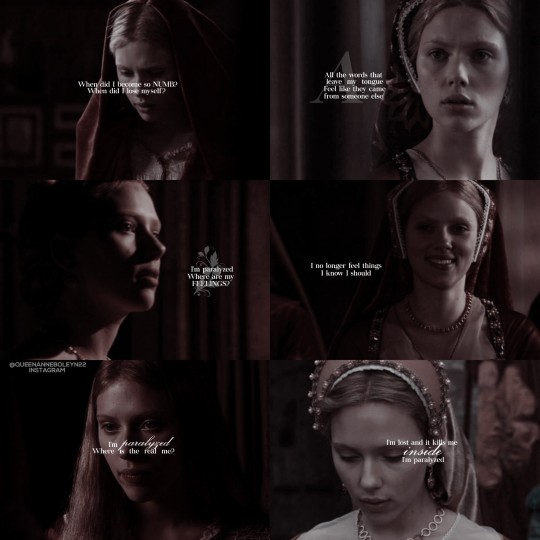
"It was probably William Cornish who produced the pageant and played the role of Ardent Desire: Hall makes it very clear that it was not the King. This was Cornish’s last major pageant: he died in 1523, and was succeeded as deviser of court revels by John Rightwise, who continued in the same tradition. Rightwise, a clever Latinist, succeeded William Lily that same year as High Master of St. Paul’s School. Mary Tudor, Duchess of Suffolk, led the dancers as Beauty; the Countess of Devon played the role of Honour; Mary Boleyn was Kindness; Jane Parker, the daughter of Lord Morley and shortly to be betrothed to Mary’s brother George Boleyn, was Constancy; and Anne Boleyn, Mary’s younger sister, recently recalled from the French court because of the deteriorating political situation, was Perseverence. Anne Boleyn was just embarking on her spectacular but ultimately disastrous career, and this was her public debut at the English court. Born around 1501, she had spent her formative years first at the brilliant court of Margaret of Austria, then in the household of Mary Tudor during her brief reign as Queen of France, and later as a maid of honour to the pious Queen Claude. At the Burgundian and French courts, Anne had gained a fine education and learned every sophisticated accomplishment and on her return to England, her father—or possibly her sister’s influence—was able to secure her a place in Queen Katherine’s household. Anne stood out among the ladies at the English court because she was so French in her manners and style of dress, and therefore at the forefront of fashion. Anne was then about twenty-one, rather old to be unmarried. For two years now, her father had been negotiating to wed her to Sir James Butler, heir to the Earl of Ormonde, to settle a dispute over the Ormonde inheritance; but the matter was dropped for reasons that are not clear. Thanks not only to Sir Thomas Boleyn’s talents as a diplomat and courtier, but also no doubt to his daughter Mary’s occasional occupancy of the royal bed, the Boleyns were in the ascendant and becoming very influential." - Alison Weir, The king and his court.
#perioddramasource#perioddramacentral#perioddramaedit#mary boleyn#scarlett johansson#the other boleyn girl#theotherboleyngirledit#tobgedit#tobg#maryboleynedit#tudor england#tudorssource#tudorsource#tudorsedit#the tudors#historical women#history#historyedit#the other boleyn girl#boleyn#anne boleyn#henry viii#eric bana#lyrics#lyricsedit#alison weir#sjohanssonedit#16th century#english history#historical
57 notes
·
View notes
Text
Aboriginal, Gaelic, and Cornish stories about ancient coastal landscape and environmental change on the seashore. Peer-reviewed article documenting impressive age and accuracy of stories, some stories probably thousands of years old, passed on by oral tradition. Specific examples and case studies of stories from Australia and the British Isles. Oral storytelling as a source of historical information. “Literacy,” Euro-American academic hierarchies of knowledge, and the legitimacy and “scientific” accuracy of Indigenous knowledge.
---
In many long-enduring coastal cultures, there are stories – sometimes mythologized – about times when pieces of land became separated from mainlands by submergence, a process that created islands where none existed before. [...] Preserved in oral traditions, memories of land submergence, plausibly attributed to multi-millennial postglacial sea-level rise, are now known from 27 sites along every part of the Australian coast [...]; all traditions are contained in stories repeatedly communicated between generations that recall when the coast was further out to sea, when people utilized the now-submerged land, and where what are now offshore islands were contiguous with the mainland. They include stories about the inundation of Spencer Gulf and the creation of islands therein, including Wardang Island (Waraldi) that became an island 8500–7400 cal BP, an event recalled in various extant Narungga (Aboriginal) stories [...]. Memories of submergence communicated in comparable ways in Haida Gwaii and Heiltsuk (Canada) traditions [...].
---
There is a growing acceptance among scholars of the validity and importance of oral traditions as historical sources, a non-literary archive of stories ‘encoded in ecological, paleontological and archaeological localities’ [...]. Indigenous scholars have been advocating for the inclusion of their ways of knowing in scholarship for decades, calling for the decolonizing of historical methods and the rejection of the perception of oral traditions as an inferior source of knowledge. [...]
---
Acclaimed Lardil storyteller, Dick Roughsey (Goobalathaldin) explained how ‘in the beginning, our home islands, now called the North Wellesleys, were not islands at all; but were part of a peninsula running out from the mainland … the Balumbanda people came along that peninsula long before it was cut up into islands’ (1971, 20). [...]
Many Indigenous groups in South Australia, including the Ngarrindjeri, Ramindjeri and Jarildekald, have told stories about a time when the (now-) offshore island named Kangaroo Island was connected to the mainland [...].
---
There are numerous stories that recall (or can be interpreted as recalling) the effects of sea-level rise [...], particularly off the coast of North Uist [...]. A good example refers to the now-uninhabited Monach (or Heisker) Islands, where its 19th-century residents recounted oral traditions about the time when these islands were contiguous with North Uist. A clue lies in the origin of the name Heisker, from the Gaelic aoi-sgeir meaning isthmus-skerry [...].
Closer to the North Uist mainland is the island of Baleshare where there are legends recalling ‘the walls of ruined cottages … underwater off the western shore’ (James and Duffy 2003, 43). On nearby Kirkibost Island, ‘the sea now occupies fields which formerly produced fine crops of bear or barley’ (MacRae 1845, 163). [...]
A better-documented example refers to the tradition among the people of Berneray and Pabbay Islands, today separated by 3.5 km of ocean, that ‘in former times the two islands were only separated by a very narrow channel, so that people could shout across and be heard, or even throw things across’ (Elton 1938, 287), a story obtained in 1935 from three independent sources. [...]
---
Of interest also are the ways other than storytelling in which memories of islandization were sustained in largely oral contexts. One way was in the names of places, a good example being the alternative name for the Monach Islands (Scotland) as Heisker or aoi-sgeir (isthmus-skerry). Off the south coast of Cornwall (England), the Cornish name for St Michael’s Mount is Carreg Coedh yn Clos, the ‘grey rock in the wood’, which recalls the time when this (now-) island was a hill within a forested part of the mainland (Curran 2000). In northeast Australia, the Aboriginal name mudaga (the pencil pine Athrotaxis cupressoides) refers to a place (now underwater) between Fitzroy Island and the mainland where these trees grew when sea level was lower [...].
---
Where such knowledge could not be written down, it was spoken (and sung or recited or performed) but in colonizers’ worldviews, this was not history but fable, akin to the tales of the Brothers Grimm and Hans Christian Andersen (Mahuika 2019). Western epistemologies divided history into prehistoric (non-literate) and historic (literate), creating a hierarchy with the former deemed inferior. [...]
---
Text by: Patrick Nunn and Margaret Cook. “Island tales: culturally-filtered narratives about island creation through land submergence incorporate millennia-old memories of postglacial sea-level rise.” World Archaeology Volume 54. June 2022. [Bolded emphasis and italicized first paragraph added by me.]
137 notes
·
View notes
Text

Syvilla Fort (July 3, 1917 – November 8, 1975) was a dancer, choreographer, and dance teacher. Born in Seattle, she drew on her African American heritage in her original dance works. American composer John Cage wrote his first piece for prepared piano, Bacchanale, for a dance by her.
She attended the Cornish School of Allied Arts in Seattle as their first African American student after graduating from high school. After spending five years at the Cornish School, she decided to pursue her dance career in Los Angeles, composer William Grant Still, introduced her to dancer Katherine Dunham. She began dancing and touring with the Katherine Dunham Company and learning the Dunham technique, which was rooted in the dance traditions of Africa, Haiti, and Trinidad. She danced with the company until 1945 and was included in the well-known film Stormy Weather. #africanhistory365 #africanexcellence
3 notes
·
View notes
Text
The Druids : Brahmins of Ancient Europe

The Celtic people spread from their homeland in what is now Germany across Europe in the first millennium bce. Iron tools and weapons rendered them superior to their neighbors. They were also skilled farmers, road builders, traders and inventors of a fast two-wheeled chariot. They declined in the face of Roman, Germanic and Slavic ascendency by the second centuries BCE.
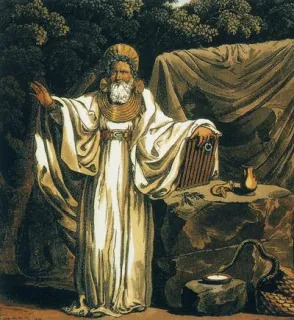
Here Peter Berresford Ellis, one of Europe’s foremost experts of the Celts, explains how modern research has revealed the amazing similarities between ancient Celt and Vedic culture. The Celt’s priestly caste, the Druids, has become a part of modern folklore. Their identity is claimed by New Age enthusiasts likely to appear at annual solstice gatherings around the ancient megaliths of northwest Europe. While sincerely motivated by a desire to resurrect Europe’s ancient spiritual ways, Ellis says these modern Druids draw more upon fanciful reconstructions of the 18th century than actual scholarship.
The Druids of the ancient Celtic world have a startling kinship with the brahmins of the Hindu religion and were, indeed, a parallel development from their common Indo-European cultural root which began to branch out probably five thousand years ago. It has been only in recent decades that Celtic scholars have begun to reveal the full extent of the parallels and cognates between ancient Celtic society and Vedic culture.
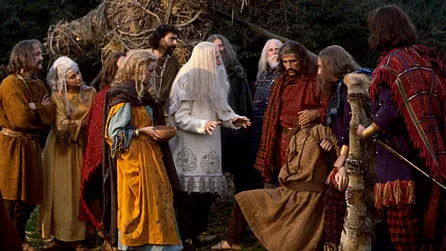
The Celts were the first civilization north of the European Alps to emerge into recorded history. At the time of their greatest expansion, in the 3rd century bce, the Celts stretched from Ireland in the west, through to the central plain of Turkey in the east; north from Belgium, down to Cadiz in southern Spain and across the Alps into the Po Valley of Italy. They even impinged on areas of Poland and the Ukraine and, if the amazing recent discoveries of mummies in China’s province of Xinjiang are linked with the Tocharian texts, they even moved as far east as the area north of Tibet.
The once great Celtic civilization is today represented only by the modern Irish, Manx and Scots, and the Welsh, Cornish and Bretons. Today on the northwest fringes of Europe cling the survivors of centuries of attempted conquest and “ethnic cleansing” by Rome and its imperial descendants. But of the sixteen million people who make up those populations, only 2.5 million now speak a Celtic language as their mother tongue.

The Druids were not simply priesthood. They were the intellectual caste of ancient Celtic society, incorporating all the professions: judges, lawyers, medical doctors, ambassadors, historians and so forth, just as does the brahmin caste. In fact, other names designate the specific role of the “priests.” Only Roman and later Christian propaganda turned them into “shamans,” “wizards” and “magicians.” The scholars of the Greek Alexandrian school clearly described them as a parallel caste to the brahmins of Vedic society.
The very name Druid is composed of two Celtic word roots which have parallels in Sanskrit. Indeed, the root vid for knowledge, which also emerges in the Sanskrit word Veda, demonstrates the similarity. The Celtic root dru which means “immersion” also appears in Sanskrit. So a Druid was one “immersed in knowledge.”
Because Ireland was one of the few areas of the Celtic world that was not conquered by Rome and therefore not influenced by Latin culture until the time of its Christianization in the 5th century ce, its ancient Irish culture has retained the most clear and startling parallels to Hindu society.
Professor Calvert Watkins of Harvard, one of the leading linguistic experts in his field, has pointed out that of all the Celtic linguistic remains, Old Irish represents an extraordinarily archaic and conservative tradition within the Indo-European family. Its nominal and verbal systems are a far truer reflection of the hypothesized parent tongue, from which all Indo-European languages developed, than are Classical Greek or Latin. The structure of Old Irish, says Professor Watkins, can be compared only with that of Vedic Sanskrit or Hittite of the Old Kingdom.
The vocabulary is amazingly similar. The following are just a few examples:
Old Irish – arya (freeman),Sanskrit – aire (noble) Old Irish – naib (good), Sanskrit – noeib (holy) Old Irish – badhira (deaf), Sanskrit – bodhar (deaf) Old Irish – names (respect), Sanskrit – nemed (respect) Old Irish – righ (king), Sanskrit – raja (king)
This applies not only in the field of linguistics but in law and social custom, in mythology, in folk custom and in traditional musical form. The ancient Irish law system, the Laws of the Fénechus, is closely parallel to the Laws of Manu. Many surviving Irish myths, and some Welsh ones, show remarkable resemblances to the themes, stories and even names in the sagas of the Indian Vedas.
Comparisons are almost endless. Among the ancient Celts, Danu was regarded as the “Mother Goddess.” The Irish Gods and Goddesses were the Tuatha De Danaan (“Children of Danu”). Danu was the “divine waters” falling from heaven and nurturing Bíle, the sacred oak from whose acorns their children sprang. Moreover, the waters of Danu went on to create the great Celtic sacred river–Danuvius, today called the Danube. Many European rivers bear the name of Danu–the Rhône (ro- Dhanu, “Great Danu”) and several rivers called Don. Rivers were sacred in the Celtic world, and places where votive offerings were deposited and burials often conducted. The Thames, which flows through London, still bears its Celtic name, from Tamesis, the dark river, which is the same name as Tamesa, a tributary of the Ganges.
Not only is the story of Danu and the Danube a parallel to that of Ganga and the Ganges but a Hindu Danu appears in the Vedic story “The Churning of the Oceans,” a story with parallels in Irish and Welsh mytholgy. Danu in Sanskrit also means “divine waters” and “moisture.”
In ancient Ireland, as in ancient Hindu society, there was a class of poets who acted as charioteers to the warriors They were also their intimates and friends. In Irish sagas these charioteers extolled the prowess of the warriors. The Sanskrit Satapatha Brahmana says that on the evening of the first day of the horse sacrifice (and horse sacrifice was known in ancient Irish kingship rituals, recorded as late as the 12th century) the poets had to chant a praise poem in honor of the king or his warriors, usually extolling their genealogy and deeds.
Such praise poems are found in the Rig Veda and are called narasamsi. The earliest surviving poems in old Irish are also praise poems, called fursundud, which trace back the genealogy of the kings of Ireland to Golamh or Mile Easpain, whose sons landed in Ireland at the end of the second millennium bce. When Amairgen, Golamh’s son, who later traditions hail as the “first Druid,” set foot in Ireland, he cried out an extraordinary incantation that could have come from the Bhagavad Gita, subsuming all things into his being
Celtic cosmology is a parallel to Vedic cosmology. Ancient Celtic astrologers used a similar system based on twenty-seven lunar mansions, called nakshatras in Vedic Sanskrit. Like the Hindu Soma, King Ailill of Connacht, Ireland, had a circular palace constructed with twenty-seven windows through which he could gaze on his twenty-seven “star wives.”

There survives the famous first century bce Celtic calendar (the Coligny Calendar) which, as soon as it was first discovered in 1897, was seen to have parallels to Vedic calendrical computations. In the most recent study of it, Dr. Garret Olmsted, an astronomer as well as Celtic scholar, points out the startling fact that while the surviving calendar was manufactured in the first century bce, astronomical calculus shows that it must have been computed in 1100 bce.
One fascinating parallel is that the ancient Irish and Hindus used the name Budh for the planet Mercury. The stem budh appears in all the Celtic languages, as it does in Sanskrit, as meaning “all victorious,” “gift of teaching,” “accomplished,” “enlightened,” “exalted” and so on. The names of the famous Celtic queen Boudicca, of ancient Britain (1st century ce), and of Jim Bowie (1796-1836), of the Texas Alamo fame, contain the same root. Buddha is the past participle of the same Sanskrit word–“one who is enlightened.”
For Celtic scholars, the world of the Druids of reality is far more revealing and exciting, and showing of the amazingly close common bond with its sister Vedic culture, than the inventions of those who have now taken on the mantle of modern “Druids,” even when done so with great sincerity.
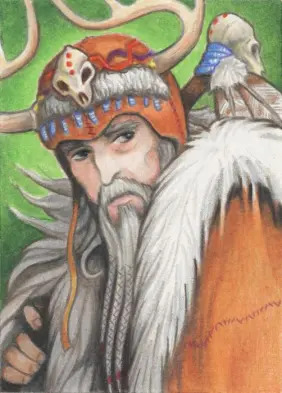
If we are all truly wedded to living in harmony with one another, with nature, and seeking to protect endangered species of animal and plant life, let us remember that language and culture can also be in ecological danger. The Celtic languages and cultures today stand on the verge of extinction. That is no natural phenomenon but the result of centuries of politically directed ethnocide. What price a “spiritual awareness” with the ancient Celts when their culture is in the process of being destroyed or reinvented? Far better we seek to understand and preserve intact the Celt’s ancient wisdom. In this, Hindus may prove good allies.
The Song of Amairgen the Druid I am the wind that blows across the sea; I am the wave of the ocean; I am the murmur of the billows; I am the bull of the seven combats; I am the vulture on the rock; I am a ray of the sun; I am the fairest of flowers; I am a wild boar in valor; I am a salmon in the pool; I am a lake on the plain; I am the skill of the craftsman; I am a word of science; I am the spearpoint that gives battle; I am the God who creates in the head of man the fire of thought. Who is it that enlightens the assembly upon the mountain, if not I? Who tells the ages of the moon, if not I? Who shows the place where the sun goes to rest, if not I? Who is the God that fashions enchantments– The enchantment of battle and the wind of change?
Amairgen was the first Druid to arrive in Ireland. Ellis states, “In this song Amairgen subsumes everything into his own being with a philosophic outlook that parallels the declaration of Krishna in the Hindu Bhagavad-Gita.” It also is quite similar in style and content to the more ancient Sri Rudra chant of the Yajur Veda.
(From Hindu Human Rights)
23 notes
·
View notes
Text
Dark, Surreal Noir Comedy
[Once again, the inclusion of a religious or mystical practice in any of my stories does not constitute an endorsement of it.]
"Arjuna's Bow"
Chapter I
Detective Sammy Drayson, NYPD, dealt mainly with crime in the East Village. Art, drugs and the occasional homicide, Drayson thought. Drayson specialized in the homicides.
1986 was the year, the hipsters of the new kind were rising, the kind Broadway would immortalize, the kind that would be cliché in two or three decades, but at the time, they were the new hippies, and being one meant something, whether you liked them or not.
But then, there was the other side of it: The addiction, the AIDS epidemic, both so common among the artists, and wherever there were narcotics, some would fight to the death over them, others to the death over who sold them, and then there were those who killed for reasons no one understood.
But while Drayson, who believed in nothing he could not see, pored over the tedious red tape at his desk, in an apartment in East Village, Apartment 61 on 13th Street, a woman known to her neighbors only as "Adam L", no context or explanation, was trying to invoke powers at which the cynical Sammy would have laughed, but soon he would believe.
Taking an ebony wand, hardly a traditional wand of the old Druids, given where ebony trees grow, Adam L touched it to the portrait of a man, then to a treasure chest of sorts, and back and forth, chanting in the old Enochian language of Dee and Kelley, until finally, with a yell, she exclaimed, very much in English, "Puppet!"
Chapter II
On a rainy day about a week later, the first of several unsolved homicides occurred. No robbery, no apparent motive: A 52-year-old man out walking his dog was the victim, taken by surprise with a knife. Though his faithful canine friend obviously put up a fight, and likely left some mark on the assailant, the dog, mixed in breed, was too small to prevent the crime.
Drayson heard of the case, but it seemed like the random act of a junkie, and no leads could be found… until four days later, when similar injuries were found on the remains of woman, 27, on the same street, then, just over a week later, an elderly couple, octogenarians at that, all the same: Probably the same weapon, the same lack of motive, and within a radius of less than a quarter of a mile.
Even as Sammy was on the scene of the poor elderly man and woman, in came a call that a young man of 19 died in identical circumstances in a parking lot, perhaps two hundred yards from where Drayson stood, but by now, the killer had gotten away, and Drayson was hearing no end of it from the Captain, though Captain Marsh was concerned more with bad press than with lives.
This time, though, there was a witness, but not one that a district attorney would covet. An old Cornish man, Tom Carew, a painter of some local repute, claimed to get a fleeting glimpse of the killer, but having a limp, he said, it was no use giving chase. In his Cornish dialect, he insisted that the killer was a woman wearing the mask of a man, but also rambled something that Drayson took to be about a man carrying a boom box playing music.
Nine times out of ten, Drayson would have put one word in his notes, that being "gibberish", over such a story, but his job had been threatened, and he was desperate enough to take dilligent notes, in so far as he could understand Cornish:
"Flick o' the wan' o' the cunning wom'n, 'tis what took the souls. Street 13 an' oak, proper fit for her, pale and wan wi' a wan', she is. Looks a maid, 'tis old in deed. Cunning maid pilfered the ol' swag chest 'o Blood Barq."
Such was Carew's explanation of who he thought responsible for the crime he had witnessed.
Chapter III
"I am so desperate," remarked Drayson at headquarters, "That I'm going to Sleepy Brown."
David "Sleepy" Brown was a Lieutenant in the force, 62 years of age, whose greatest asset to the force was as a historian and linguist. He had solved many an antiques caper and fraud, spoke and wrote perfect Greek, Latin, Spanish and Hebrew, as well as English and every Celtic language, and though not from Cornwall, but from Devon, originally, before his parents moved him, as a child, to New York, it was for this last bit of expertise that Drayson needed him.
With typical lack of protocol, finding an unlocked door, Drayson simply let himself in to Brown's office, where the old man seemed to be nodding off, fitting his nickname. Drayson sneered.
"Lovely sneer, Detective. By the way, the sole of your right shoe needs mending," remarked the Lieutenant, revealing that, as was so often the case, his drowsy appearance was an act, "You are here about the Cornish witness, I presume?"
Analyzing Drayson's jumbled notes, Brown opined, "Look for an Apartment 61 on 13th Street, and if you find a woman fond of Druid wands and treasure chests, you will find someone relevant to your investigation."
"How on earth do you know what apartment to look for?"
"This… shall we say, eccentric old fellow was speaking in a sort of mystical code. 61 is the gematria- that's a kind of esoteric code- for 'oak'."
"What about Blood Bark?"
"Blood Barq, with a 'q', Detective, though there are several theories as to the etymology. It's a legend of a British pirate with a lost treasure. No one knows his real name, or even whether he existed with certainty, so they call him Blood Barq."
"You are seriously proposing that a dead pirate has something to do with this case?"
"No, I am proposing that a delusional person might believe he did, however."
With that, Brown closed his eyes and returned to what was either slumber or meant to give that impression.
Chapter IV
Detective Drayson found an Apartment 61 on 13th Street, not far from where the murders occurred, but while a woman's voice answered, all she would say is that, if he had no search warrant, he was not welcome, and that she would answer no questions. It was Adam L's apartment, and Drayson scrambled off to try to find her birth name, but before this, another unexpected witness, as it seemed, came forward.
A man was at the station claiming to be the man with the boom box seen by Carew, saying that his conscience was bothering him. His name was George Clay.
"Okay, officers, I'm taking the chance. You know I got a record and I don't want no trouble, but I swear to you, I didn't know anything about a murder."
"What did you know?" asked Drayson, in his sternest voice.
"Look, all I know is this man, sunglasses and a beard, maybe a fake beard, I don't know. Sunglasses and it was rainin'. Anyhow, he shows me this freaky person, not sure if it was a guy or a girl, but anyway, he says he'll pay me $500 just to follow him, or her, or whatever around and play my boom box for a few blocks, as long as I play the song he wants."
"What song?"
"'Tragedy', a Bee Gees song. Now I'm more a funk man, and that ain't…"
"Get to the point!"
"Anyhow, this crazy person freaks hearin' the song, pulls a knife and attacks the nearest person, as far as I could see, some skinny white kid."
"And you did nothing?"
"Look, man, I got a record. I panicked, okay? But I'm here now, right, and I didn't have to tell you anything, or even let you know I was there!"
Chapter V
Kenny "Dum Dum" Wallace Jr. was the bassist for a struggling glam metal act calling itself "Long Live the Buzz Flies". On his way to a poorly-built recording studio aptly named "The Leaky Roof", he was approached by a man with a beard and sunglasses, again on an overcast day, offered $500 for the simple act of carrying a boom box playing "Tragedy" by the Bee Gees and following someone, someone with the face of a man, but a feminine walk.
Wallace shrugged, and did as instructed, but as in Clay's story, the strange person flew into a frenzy, pulled a knife, and for a moment, Dum Dum thought he was the intended target, but instead, the victim was a 39-year-old accountant, Anderson Tall. This time, though, there was a witness to the entire sequence of events, and not only the killing, Marjorie "Meddler" Davison, a 67-year-old woman feared as much as any man on the streets, in her own way, as a notorious gossip rumored to leverage information for blackmail, someone who knew everything about everybody, it seemed.
She considered blackmailing the band, until attending one of their concerts and seeing the small crowd. Instead, Davison went to the police, but tried to insist on being paid for her information.
"In the first place, Meddler," said Drayson sharply, "If we paid you, it would set a precedent where every lowlife like you could shake us down. Second, it would destroy the credibility of what you saw, to the DA. How about you tell us what happened and we won't go after you for about, maybe, six or seven blackmail operations you have going on at this moment?"
With that, Davison described what she had seen, and the pattern was undeniable, if grotesque. Drayson was planning on looking into whether anyone known to be unstable, like an escaped hospital patient, might be involved, when Lieutenant Brown casually strolled into the room with a dossier on just such a person, Courtney Randall Cline, noted as "paranoid schizophrenic", "homicidal ideations", yet for some reason given permission, just two days before the killings began, "to visit family".
Chapter VI
Uniformed police and street gossip had it that Courtney Cline was living out of a van, an old hippie one, but painted over a silvery gray. Police approached her, and she was wearing a mask in the detailed likeness of a man, though which man was unclear.
"I don't care if you're cops. You play that disco song, you die."
The officers, with great difficulty, cuffed her as a dangerous suspect, but she calmed down when promised that no disco music would be played, and after that, blandly and indifferently recounted committing all six murders, explaining that strange men kept following her with "that horrid song", and "made me do it". When asked about the mask, which she removed only with reluctance, she said that she found it in her room at the mental hospital, and it was a likeness of William "Wolf" Woolley, soon verified as an actual patient in the same wing of the same hospital, and a known murderer himself, albeit found insane. Woolley, however, had been in the hospital during all six killings, and so could not have been directly involved.
Courtney R. Cline was arrested on six counts of second-degree murder, though it was suspected that she would, like Wolf, be acquitted by an insanity defense.
"You think you have solved the case, eh, Drayson?" said Brown, ambling out of nowhere with his customary quiet ease.
"Of course, and you don't?"
"We know who physically carried out the crimes, but why this same song, and this mysterious man I hear of, the false beard and the $500 offers to random men?"
"I admit that is odd, but how can I ever prove any of that?"
The Lieutenant shook his head and smiled, "If you would only use a bit of imagination, Detective. None of Cline's notes say anything about a fixation regarding music, as one might reasonably expect if said music drove her into homidical fits."
"And what does that suggest, Sherlock Holmes?" asked Drayson insolently.
"Sherlock is suggesting that someone at the hospital conditioned Miss Cline as a sort of post-hypnotic suggestion. Follow that lead to the ends of the earth, Detective. Now, if you'll excuse me, I have to go back to earning the nickname 'Sleepy'."
Chapter VII
Again reluctantly following Sleepy's advice, Drayson found, rather to his surprise, that Wolf Woolley's notes did indeed include the warning, "Violent reaction to disco". There could also be no question that Cline's mask was a perfect likeness of Woolley.
Dr. Karl Steele gave the NYPD full access to both records and to the premises. One thing struck Drayson, however: All of the staff agreed that, at least in Cline's absence, there could be no question that Woolley was their most dangerous patient, yet Wolf was not in the "isolation room", a sort of equivalent of solitary confinement.
"That's Dr. Steele's idea," explained a nurse, "He said that Mr. Woolley is incurable, nothing changes him, but that the isolation room might change the behavior of some of the other patients."
Detective Drayson was permitted to look into the isolation room, and could scarcely believe the surreal horror within: A man in a straitjacket wore also a mask of William Woolley's likeness, as faintly, the song "Tragedy" could be heard playing, interspersed with the voice of Wolf ranting his hatred of the disco genre, and back and forth, causing the patient to writhe in torment.
The nurses and orderlies seemed to think nothing of this, calling it "an experimental therapy" and "Dr. Steele's idea". An even greater shock: Detective Drayson was suddenly face to face with the gaunt yet imposing figure of Dr. Karl Steele, his deeply recessed eyes glistening cold malevolence, a tight-lipped smile seeming to speak death.
Chapter VIII
Even Drayson's hardened nerves got a terrible start, but suddenly, Steele's demeanor seemed to relax, and he laughed, albeit with a cynical ring.
"Detective, Detective, we mustn't have anxiety. I let you see that. I knew that you would deduce it sooner or later- either you or that old Lieutenant."
"You're the killer!" exclaimed Drayson.
"The killer? I never touched a soul, never gave any instructions to anyone so much as to jaywalk, Detective."
"Conditioning… you hypnotized them!"
"Welcome to the future. The quaint moral laws of Abrahamic times are dying slowly, Detective. There are chessmasters and there are pawns. I have demonstrated that I am a chessmaster. Mr. Woolley… well, he has the will to power, but not the clarity. I have both. You have the potential for both too, Detective. I read in your eyes a deep distrust for the lies of the old ways, and a potential for the new."
"Maybe so," replied Drayson, recovering his nerve, "But what you fail to read is that I would rather die than break my oath to uphold the law. You won't touch me, will you, Doctor? You want others to do the dirty work."
"That is what you call it," shrugged Steele, "But return as you like, you have nothing on me."
The next day, Detective Samuel Drayson, instructing his uniformed help to wait outside the building, returned to the hospital, barging directly into Steele's private office.
"I've been expecting you, but to what avail?" smugly cooed the Doctor.
"That's right. You never said a word. Never told them to do a thing."
"Exactly…"
"Neither did I…" Drayson retorted, his eyes set cold as the Doctor's. Into the room, unrestrained and feral, lurched William Woolley himself, a sight that shook even Dr. Steele.
With a theatrical air, Drayson took out a tape recorder, then stepped back, so that Wolf was closest to the Doctor.
"Tragedy, when the feeling's gone, and you can't go on, it's tragedy…"
In the frenzy of a rabid beast, Wolf attacked, fists and teeth, as Dr. Steele screamed, the last sounds he would ever make, as Drayson locked the door behind the two, escaping as hospital staff desperately rushed to respond.
Chapter IX
"Wolf will be trying to escape, likely out the front way, and if not, I have men at the back," said Drayson.
Indeed, Wolf, covered in evidence of his savage attack on the late Dr. Steele, helped himself to the front exit, only to be captured by nine policemen, one of them Drayson, though not before biting one of them.
Wolf looked up at one of the cops, who in spite of the struggle, still had a cigarette in his mouth. For the first time, Woolley spoke, laughing and saying to the smoker, "You're crazy too."
Meanwhile, somewhere in the United States of America, the quality control inspector of the very cigarette this policeman smoked lived a life in turmoil, his wife having an affair as he tried to drown his sorrow. As the factory man threw a bottle of whiskey at a photograph of his wedding, Jeremy Thomas met with the flashes of cameras. Thomas was founder, chairman and CEO of Jeremy Thomas Holdings, which held a controlling share in the liquor company profiting from the broken man's sorrow, but he was announcing giving a portion of his billions to United Governments, a philanthropic organization dedicated to world peace.
The flash of the cameras gave way to the flash of lightning, however, as the money Thomas "donated" was being illicitly invested in the Medellín Cartel of Colombia, as haggard Colombian workers picked coca leaves in a storm of rain and thunder, the lightning giving way to neon lights in the middle of the night, somewhere in an American city, a man slumped over, a man broken by cocaine.
Jeremy Thomas, as it turned out, had not always been wealthy, though he had always been unscrupulous. Prior to his wealth, he was briefly married to Lillian Morgan, now calling herself "Adam L", bitter over never having touched Jeremy's later fortune. If the Fates were not capricious enough, the very secretary named as co-respondent by Morgan in her divorce from Thomas had, in turn, just married none other than Lieutenant David Brown, twenty-four years her senior, as if an aging Sherlock Holmes wed a surviving Jayne Mansfield, though Mansfield, of course, was more clever than the public knew.
Brown's loud sounds on the wedding night, in somewhat of a British accent, annoyed the neighbors. Meanwhile, Detective Sammy Drayson, ever the contrarian, was a basketball fan, but not a fan of the New York Knicks, but of the Boston Celtics, and on a rare vacation, was in Boston, watching the most successful playoff run of the 1985-86 Boston Celtics, for once forgetting the wretched world around him.
The end.
#short story#original work#mystery#noir#urban gothic#80s#East Village#New York City#occult#Druid#Arjuna#Hinduism#magick#Manhattan#Kabbalah#Cornish#dark humor#schizophrenia#tw: alcohol#tw: drugs#tw: death#tw: violence#tw: implied sex#tw: smoking#philosophy#Friedrich Nietzsche#disco#Bee Gees#absurdism#hypnosis
4 notes
·
View notes
Note
This is the self insert/OC fairy. 🌼🧚♀️When you get this in your ask box, please tell us 3 facts about your S/I or OC and pass it around. Let's learn about each other's S/Is/OCs! 🌈🌷
I'd love to learn more about your OCs! They all seem super interesting❤️
Hello mate! Thanks for the ask!!
Ok, so I do not know which oc to pick, so I shall give you all three lmao XD I hope you're ok with that!
~~~~~ \(0u0)/ ~~~~~
Jodie "Bell" Hall (BOCW OC)
After the events of the campaign, Jodie couldn't quite drop the English accent she'd gained from the hours of speaking with Park; however, depending on her state, her original Russian accent might slip through. For example, if she is very sleepy, the English accent slowly fades and she'll speak at you in a mild Russian accent. On the other hand, if someone angers her, it can slip through then, too. I based this off the fact that when I get angry, my northern accent breaks on through my usually not-so-northern accent; I thought that it would make some sense that her accent shifts or fluctuates as the English accent was never hers to begin with, it's just something she picked up from Park.
Her brother was four years younger than her, making her an older sister.
She carries a booklet of sudoku, crossword and other puzzles with her everywhere she goes. It occupies her mind and keeps the noise in her head down - she also finds that it reminds her of cryptography, which is something Canon Bell is said to be good at. It's a tattered book and sometimes she scribbles in the margins different encoding patterns and such. It's basically something to keep her mind from falling in on itself. I might be cheeky in admitting this, but that little snippet was actually inspired by another creator; a thought was sparked and then it turned into this idea that Jodie often keeps her skills sharp by occupying her brain with these kinds of things.
~~~~~ /(030)\ ~~~~~
Franca "Major" Lorenzetti (MW OC)
Her middle name is Viola.
2. She has a family that she no longer speaks with, due to differing opinions on her choice to join the army; her father was extremely traditional and essentially forbade her joining and wanted her to focus on finding someone, settling down and having a family. You know, old traditional views that were not made to suit her. Her family are as follows: Antonio, 60: Father. Alessandra, 55: Mother. Carlotta, 34: Sister. Vincenzo (otherwise known as Vinnie), 22: brother. Later on in her life, after she has joined the military and become well established, her brother turns up on her door having been 'banished' like she had, and they have a tearful reunion. She loves her brother a lot and would do anything for him. The rest of her family though? She doesn't really talk about them much and if you were to ask her about them, she'd probably just stare at you until you left her alone.
3. Franca joined the Royal Army Medical Corps, becoming a Combat Medic. She rose through the ranks to RSM/WO1 - Regimental Sergeant Major/Warrant Officer. This associated rank is where her nickname came from, 'Major'. I actually tried to make the rank as accurate as possible, as I think different regiments and military organisations call them different things.
~~~~~ \(0x0)\ ~~~~~
Nanette MacTavish (MW)
Her maiden name was 'Oakley'.
Her dad is from Cornwall and her mum from the Midlands, so she every so often she has a little bit of a Cornish accent. It's really cute but sounds like a farmer sometimes.
She works at the primary school on the army base that she lives at. She's a teaching assistant and takes care of the children like they were her own! Oh- and her own does go to the nursery at the primary school - she has wee little lass with her husband, Soap, and she adores the girl so much.
BONUS: I don't have many facts for Nanette in the MW world, because most of the work I've done with her came about when I was planning a fantasy medieval au for Franca and Ghost. sigh. I ended up making that au about her and Soap, her knight in shining armour-ish. Ok! That's all for the facts! I hope you enjoyed reading about them!! If you're curious about anything or want anything elaborating, just hmu! Goose out!
#thank you so much for the ask!#gooseanswers#oc ask#jodie hall#nanette mactavish#franca lorenzetti#call of duty#cod oc#black ops cold war#cod mw2#bell oc cod#iamcautiouslyoptimistic
3 notes
·
View notes
Text

Rupert Phineas Weasley, loving brother and quiet, but recovering leader
Eldest son to Septimus (b. 1916) and Cedrella (nee Black), born December 1947 in Cornwall closest to his brother Arthur (b. 1950) and Cadan "Kay" (b. 1952) who looks up to him. And grew deeply close to maternal second cousin Lysander “Sanders” Blackworth (b. 1949).
Always different, Rupe mostly kept to himself through primary school with recurring odd instances of the future but had his obsessions like Arty. The three of them started at Kelynek though Rupe headed off to Hogwarts first (under Dippet), in time for O.W.L. year needing more a challenge.
A Gryffindor but near Ravenclaw (everyone won the bet about Arty's Sorting). Excelling, Rupe never sought attention though accepted an invitation to the Slug Club. Rising in the M.V.F. (soon the E.V.F.), Rupe found his truest friends in their campaign for Professor Dumbledore’s appointment as Head or Deputy.
—
Had Rupe accepted a leadership position that struck them numb, or worse? Little tradition has changed, but Hogwarts is freer under Headmaster Dumbledore. And Weasleys are finding a proper voice -- only if Rupe believes it.
—
Read the full story in Cor Aut Mors. A tale in the continuing fight for Hogwarts, freer yet still trapped. It begins in 1968 before Minister for Magic Leach’s downfall to the aftermath in the outbreak of war in 1970.
(Photos: Books and beach from pexels.com, Cornish flag from Wikimedia, and galaxy crystal ball from Business Insider)
#weasley family#rupert weasley#hpedit#septimus weasley#cedrella weasley#arthur weasley#original character#cor aut mors
5 notes
·
View notes